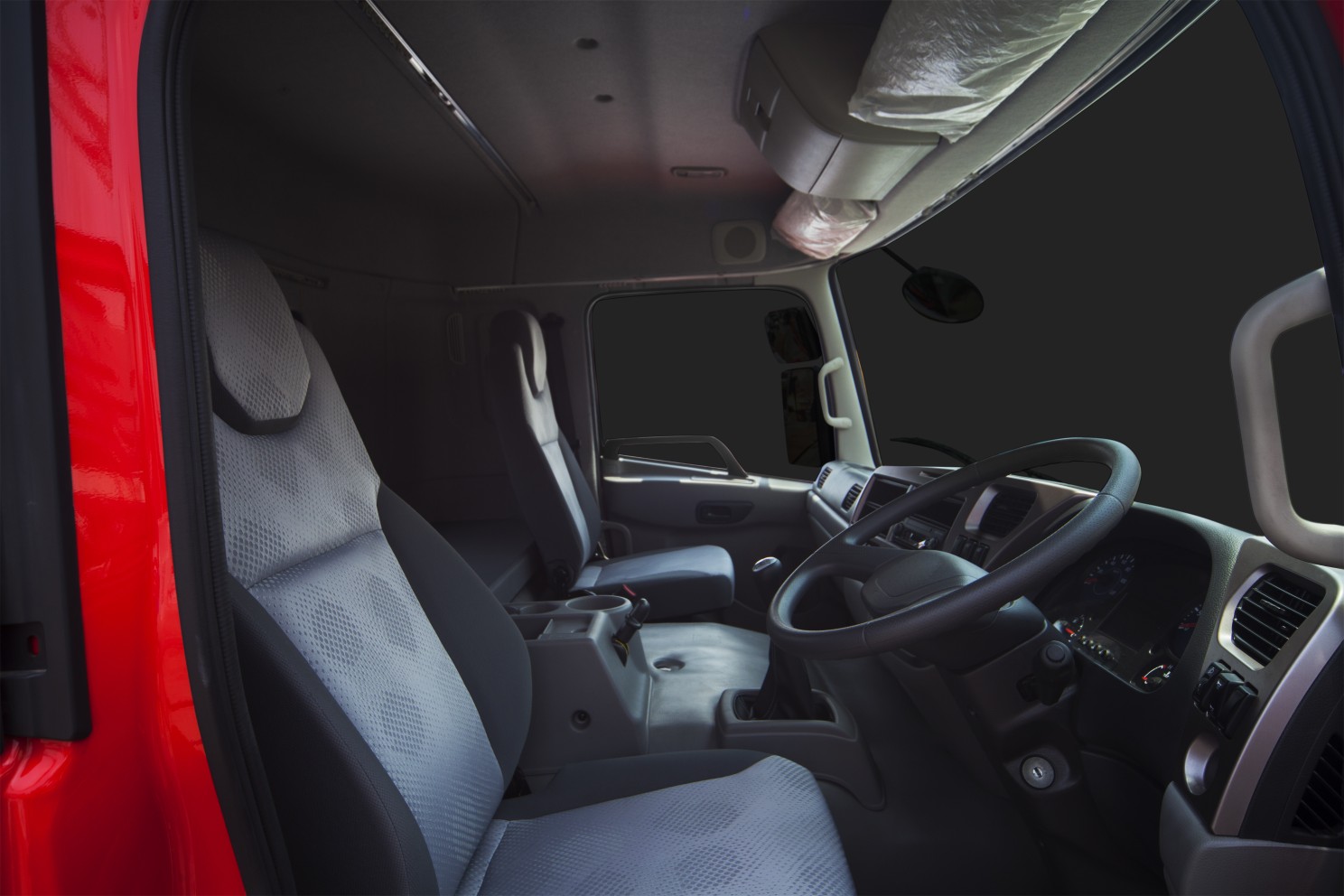
Susie Jones
Cinque consigli utili per rendere la cabina del vostro camion una casa
Creato: 22/08/2024
•
Aggiornato: 22/08/2024
Come autista di camion, trascorrete lunghe ore sulla strada che spesso possono essere stancanti e monotone, quindi è naturale che vogliate che il vostro ambiente, l'area in cui stazionate più a lungo, sia come una seconda casa. Per questo motivo, molti autisti tendono a personalizzare e decorare le loro cabine, ma quali sono i modi migliori per far sì che la cabina letto sia come una casa lontano da casa? Abbiamo raccolto cinque consigli per aiutarvi in questo percorso.
Decorazione
Uno dei modi migliori per personalizzare la vostra cabina è aggiungere decorazioni che vi ricordino la vostra casa. Le decorazioni consentono inoltre di aggiungere stile e colore.
Biancheria da letto e cuscini - Aggiungete un tocco personale alla vostra biancheria da letto e ai cuscini scegliendone alcuni di un colore o di un motivo che vi piace. In questo modo la cabina risulterà più accogliente e meno stagnante.
Coprisedili - I coprisedili sono spesso disponibili in diversi colori, motivi e materiali che daranno vita alla cabina. Non solo renderanno la cabina più accogliente, ma proteggeranno anche gli interni dall'usura, dallo sporco e dalle fuoriuscite. Su Amazon è disponibile un'ampia scelta di colori.
Tappeti, tende e tendaggi - La scelta di tappeti e tende può trasformare l'interno della cabina. Le tende non solo aggiungeranno un valore estetico, ma vi aiuteranno anche a riposare bene la notte.
Foto, poster e opere d'arte: questi oggetti non occupano molto spazio nella cabina e possono farla sentire subito come a casa. Utilizzate i ganci di comando per un'installazione senza danni.
Intrattenimento: Alla fine della giornata di guida, rilassatevi come a casa guardando la TV, un DVD o guardando qualcosa in streaming sul vostro computer portatile. Per lo streaming è necessario disporre di una rete WiFi; per sapere quali fermate offrono questo servizio, consultate la nostra [pagina delle mappe] (https://snapacc.com/map/).
In alternativa, create un hotspot per smartphone che utilizzi i dati del vostro telefono per lo streaming. Libri e riviste sono un altro ottimo modo per intrattenersi dopo una lunga giornata di guida. A volte, una semplice videochiamata ad amici o familiari può rilassarvi e farvi sentire a casa.

Comfort
Trascorrendo molto tempo in cabina, è importante non scendere a compromessi sul comfort. Perché non investire in quanto segue:
Coprimaterasso - Dormire bene è fondamentale per la vostra sicurezza e per quella degli altri. Investire in un buon coprimaterasso vi garantirà una zona confortevole in cui dormire.
Sedile di guida ergonomico - La maggior parte del tempo verrà trascorsa al posto di guida, quindi è importante assicurarsi che sia il più confortevole e di supporto possibile. Investite in un sedile di guida ergonomico o in un cuscino che sostenga la vostra schiena durante le lunghe ore.
Cuscini e coperte extra - Come già detto, l'acquisto di lenzuola e cuscini di un colore o di un motivo che vi piace può far sentire la vostra cabina come una casa. Considerate l'acquisto di cuscini e coperte extra per aggiungere un tocco ancora più personale alla cabina e il massimo comfort.
Cucina/elettrodomestici
L'aggiunta di un mini-frigo o di un forno a microonde nella cabina di guida può consentirvi di preparare il cibo come a casa, evitando così di dover ricorrere alle aree di sosta per camion e di mangiare fuori. Vi suggeriamo di pensare a quali articoli vi servono in quest'area, ad esempio, se siete amanti del caffè, cercate di procurarvi una piccola macchina per il caffè. L'utilizzo dell'angolo cottura e degli elettrodomestici non solo vi eviterà di spendere una fortuna per mangiare fuori casa, ma avrà anche un effetto positivo sulla vostra salute generale.
Mantenere le cose pulite e ordinate
Vivere in uno spazio piccolo può diventare disordinato molto rapidamente. Investire tempo e sforzi per una regolare routine di pulizia può fare miracoli per la vostra salute mentale e consentirvi di lavorare in modo più efficiente ed efficace. A tal fine, è utile disporre di aree dedicate ai propri oggetti e ProDrivers offre alcuni ottimi consigli per tenere tutto in ordine.
Come affrontano la noia i camionisti?
La noia non solo influisce sulla soddisfazione lavorativa, ma può anche compromettere la sicurezza sul lavoro. Ci sono molti modi in cui gli autisti di camion possono intrattenersi mentre sono in viaggio.
Musica e podcast: La musica è un ottimo modo per intrattenere gli automobilisti durante i lunghi viaggi. Creare una playlist di canzoni preferite da ascoltare può ridurre immediatamente la noia. I podcast sono un ottimo modo per cambiare le cose: molti di essi possono offrire consigli, aiutare a imparare una nuova abilità o semplicemente intrattenere.
Sgranchirsi le gambe: Fermarsi e scendere dal taxi per sgranchirsi le gambe può scacciare all'istante la noia. Le soste regolari possono anche aumentare l'energia.
Dove dormono i camionisti?
Dal 1° novembre, gli autisti di mezzi pesanti del Regno Unito che fanno regolarmente le pause settimanali in cabina devono ora farle in aree di riposo adeguate. A causa della scarsità di queste aree, alcuni conducenti si riposano in piazzole di sosta che spesso non sono sicure. Pertanto, è fondamentale trovare un luogo sicuro, protetto e tranquillo dove parcheggiare per una buona notte di riposo. Utilizzando la nostra app intruck o visitando la nostra [pagina delle mappe] (https://snapacc.com/map/) potrete trovare un'area di sosta per autocarri vicino a voi e valutare i servizi offerti.
Come affrontano la solitudine i camionisti?
Sebbene i vantaggi di essere un camionista siano molti, uno degli aspetti negativi del settore può essere la solitudine. Può essere un problema per molti autisti che si sentono isolati a causa della natura del loro lavoro. Organizzare dei piani per rimanere in contatto con amici e familiari può dare una spinta agli autisti quando sono in viaggio. I forum di autotrasporto, i gruppi di Facebook e le chat room sono ottimi per entrare a far parte della comunità degli autotrasportatori. All Trucking offre alcuni fantastici consigli per combattere la solitudine come camionista in viaggio.
Far sentire la cabina del vostro camion come una casa richiede un po' di impegno e creatività, ma i benefici che ne derivano renderanno i vostri lunghi viaggi molto più semplici. È importante ricordare che i piccoli accorgimenti possono fare una grande differenza per il vostro spazio abitativo e l'utilizzo dei suggerimenti di cui sopra vi permetterà di renderlo confortevole e accogliente. Come fate a far sentire la vostra cabina come una casa lontana da casa?



